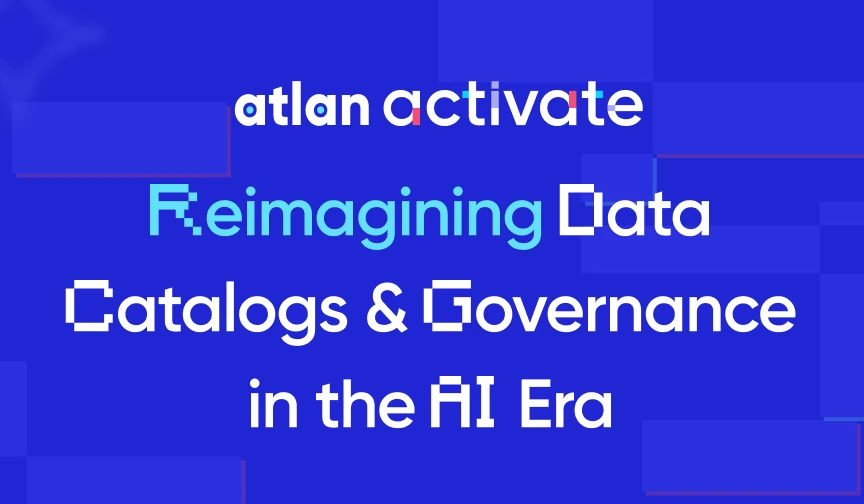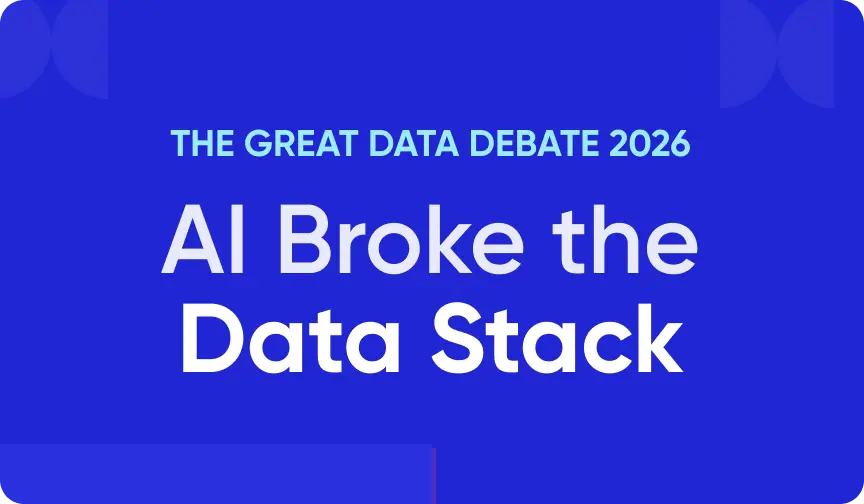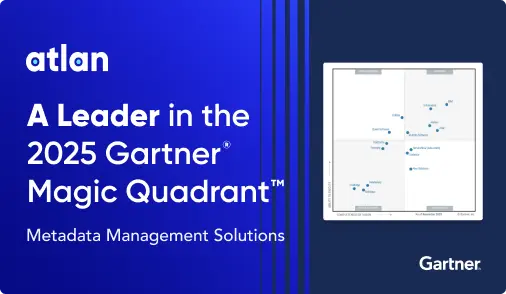How to Choose the Best Data Privacy Management Software in 2025

Last Updated on: August 18th, 2025 | 12 min read
Unlock Your Data's Potential With Atlan

Quick answer: What is the best data privacy management software?
Permalink to “Quick answer: What is the best data privacy management software?”The best data privacy management software helps identify, manage, and secure personal data while supporting regulatory compliance at scale. Key capabilities should include:
- Individual Rights Management (IRM)
- User preference and consent management
- Data lifecycle and access governance
- Cross-border data transfer and sovereignty controls
- Data intrusion and breach management
- Monitoring, observability, auditing
Up next, explore what top platforms offer and how to choose the right data privacy management software for your organization.
Table of Contents
Permalink to “Table of Contents”- Data privacy management software explained
- What are the key features to consider in data privacy management software?
- How can Atlan help you manage data privacy for your organization?
- How can you choose the best data privacy management software? 4 questions to consider.
- Ready to pick the best data privacy management software?
- Best data privacy management software: Frequently asked questions (FAQs)
Data privacy management software explained
Permalink to “Data privacy management software explained”Summarize and analyze this article with 👉 🔮 Google AI Mode or 💬 ChatGPT or 🔍 Perplexity or 🤖 Claude or 🐦 Grok (X) .
Data privacy management software is an umbrella term referring to platforms that help organizations operationalize and enforce data privacy across their systems. These tools support a wide range of needs—from managing consumer consent and rights, to ensuring regulatory compliance, to detecting and responding to privacy breaches.
Core areas typically covered by data privacy management software platforms include:
- Individual rights management (e.g., access, erasure, portability)
- User preference and consent management
- Data governance and access control
- Observability
- Data sovereignty and cross-border compliance
- Data intrusion detection and breach response management
Data privacy management tools provide the transparency, control, and automation needed to responsibly manage personal data in complex environments.
Why do you need data privacy management software in 2025?
Permalink to “Why do you need data privacy management software in 2025?”According to DLA Piper’s Data Protection Laws of the World Handbook 2025, most countries provide some form of legal protection for data, particularly when it comes to consumer data.
Countries like the US, Canada, and Australia, along with most countries in the European Union, have robust data privacy and protection regulations. These rules aim to prevent both the misuse of data and damage from accidental breaches.
In 2025, with privacy regulations continuing to expand and evolve, organizations face growing pressure to:
- Prove lawful basis for collecting and using personal data
- Track and enforce consent across systems
- Respond to subject access requests (SARs) within strict deadlines
- Monitor data use and report breaches quickly
- Maintain compliance across jurisdictions with different privacy laws
Manually managing these obligations is slow and error-prone. Privacy management software fills this gap by automating key workflows, integrating with your existing data stack, and maintaining an auditable record of all privacy-related actions, ensuring continuous compliance and consumer trust.
What are the key features to consider in data privacy management software?
Permalink to “What are the key features to consider in data privacy management software?”How data privacy management translates into tools and processes is largely dictated by the laws and regulations like GDPR, CCPA, and HIPAA, among others your organization needs to follow.
Most of these laws and regulations are concerned with data privacy and protection measures that can be split into the following broad categories:
- Individual Rights Management (IRM) refers to the rights of consumers to control how their personal information, including personally identifiable information, behavioral data, or documents, is used, shared, distributed, or sold. IRM is a concept central to some of the more advanced data protection regulations, such as the GDPR and CCPA.
- User preferences and consent management also refers to the consumer’s right to decide what information they want to share with a given application. Consent must be obtained, recorded, and honored across applications and systems. Privacy management platforms let users manage their data-sharing preferences—often at a granular level based on purpose, geography, or legal basis. Tools like TrustArc and OneTrust can be used for both IRM and preferences and consent management.
- Data lifecycle management allows you to comply with industry-specific regulations regarding data retention and disposal for data privacy and protection purposes. Some regulations mandate the retention of records for a minimum specified time period, while other regulations mandate the disposal of records after a specified time period. Some examples of lifecycle management tools are Microsoft Purview and Varonis.
- Data governance and access management is a catch-all term encompassing data access management, data classification, tagging, masking, tokenization, encryption, and granular access control. Together, these measures ensure that only authorized users can access sensitive data, and that personal data is protected according to its classification level. Data classification can be done using DIY tools like AWS Macie, among others.
- Monitoring, observability, and auditing includes tracking data access and movement, monitoring for anomalous activity, and maintaining detailed audit logs. It supports proactive compliance, simplifies incident response, and enables reporting to regulators. Platforms may also offer alerts and dashboards to surface potential issues in real time.
- Data sovereignty and cross-jurisdictional data transfer is one of the key aspects of data privacy, especially because it involves addressing two or more–at times competing–data privacy regulations. Overlapping requirements make it more difficult to tackle privacy compliance efficiently and at scale. Handling data sovereignty doesn’t only happen at the data layer; it usually involves handling data isolation and transfer control on the cloud infrastructure and networking layer, i.e., within your cloud provider.
- Data sharing and external data management help enforce data processing agreements, track shared data, and assess third-party risk. This is vital as, when sharing personal data with third parties or vendors, organizations must ensure compliance extends beyond their own boundaries.
- Data breach management relates to the features that enable timely breach detection, automated notifications, and centralized incident reporting. Many regulations mandate that data breaches be reported to affected users and authorities within a strict timeline to minimize damage.
It’s important to note that not all data privacy management software cover all these aspects. That’s where metadata plays a central role. Let’s explore why.
What is the role of metadata in data privacy management?
Permalink to “What is the role of metadata in data privacy management?”Not all data privacy management software covers every aspect of privacy. That’s because different tools operate at different layers of the stack:
- Frontend layer: Tools that manage user preferences and consent
- Backend and infrastructure layer: Tools that control access and retention
- Data layer: Tools that enforce governance, protection, and compliance on the data itself
As a result, organizations often need a combination of tools to manage privacy across systems and workflows.
The common theme that ties all these different types of tools is the innate need for metadata, which can help drive the management of data privacy across the board.
Metadata describes what your data is, where it lives, how it flows, and who accesses it. It is the connective tissue that links user-facing actions (like consent capture) with back-end enforcement (like masking, tagging, and audit logging).
To manage data privacy effectively, two key metadata-driven capabilities are required:
- A metadata control plane that allows your data privacy management software to leverage the wealth of metadata from your organization so that it can apply rules and policies across the board.
- A framework for activating metadata that allows you to automate data privacy and compliance-related work based on the metadata that can be accessed via the metadata control plane.
While tools for IRM and consent often operate outside the data stack (e.g., embedded in user interfaces), the enforcement of privacy rules at the data layer depends heavily on metadata.
This is where platforms like Atlan come in.
Atlan is a metadata activation platform built on a metadata control plane foundation. Atlan brings metadata to life by enabling automated governance, data quality, observability, access control, and secure data sharing.
This empowers organizations to implement privacy rules not just in theory, but directly in the systems that process and serve data—ensuring that compliance is active, continuous, and audit-ready.
How can Atlan help you manage data privacy for your organization?
Permalink to “How can Atlan help you manage data privacy for your organization?”Atlan is a metadata activation platform that acts as your data catalog, governance and compliance engine, collaboration and quality monitoring layer—all in one. But its strength in data privacy goes beyond checkboxes and dashboards.
Atlan helps embed privacy into the fabric of your data ecosystem by turning metadata into action. Here’s how:
- Automated data governance workflows: Automated data governance by creating scalable workflows that reduce the risk of data misuse. You can apply granular access policies, control metadata change management based on user roles, and implement repeatable compliance processes to ensure the right people access the right data—at the right time and for the right reasons.
- Policy enforcement and compliance automation: Atlan’s approach is to implement “maintain once, distribute anywhere” access policies. This automates policy compliance and ensures that your organization’s data follows a data quality, privacy, security, and lifecycle standard everywhere, across regions and regulations like GDPR, HIPAA, and CCPA.
- Data classification and tag propagation: Custom classification capabilities in combination with Tags allow you to classify data assets within Atlan. Tags can be based on common data protection schemes, such as having Public, Internal, Restricted, and Confidential. These tags propagate downstream via lineage and can be synced bidirectionally with supported source systems to ensure consistency across your ecosystem.
- Security and compliance reporting: Perform Privacy Impact Assessments (PIAs) as prescribed by certain data privacy and compliance regulations. You can also use Atlan’s extensive column-level lineage in assessing the impact of any privacy-related issue or incident.
- Granular access controls with personas and purposes: Granular permissioning in Atlan uses the concepts of Personas and Purposes. As such, you control who can view, edit, or use specific metadata, glossaries, or data assets. Atlan also integrates with your IdP using SSO and SCIM to ensure consistency across systems.
- Domains and ownership clarity: Domains and Owners allow you to define areas of responsibility for certain data assets clearly. This allows you to separate concerns based on business units, teams, and environments, among other things. With Domains, you can create domain policies for data access and usage.
- Open APIs and ecosystem integration: Atlan’s open architecture makes it easy to plug into your existing stack—whether you need to exchange consent signals, extend audit logs, or sync classifications with other privacy or security tools.
Now, these are some of Atlan’s major features that enable data privacy by leveraging and activating the metadata from the metadata control plane.
How can you choose the best data privacy management software? 4 questions to consider.
Permalink to “How can you choose the best data privacy management software? 4 questions to consider.”The right data privacy management software depends on your industry, data architecture, and regulatory exposure. Ask yourself:
1. Does it cover the full privacy lifecycle?
Look for tools that support:
- Consent and user preference management
- Data classification and tagging
- Retention, archival, and deletion policies
- Subject rights handling (e.g., access, erasure, portability)
2. Can it integrate with your tech stack?
Check if the tool:
- Connects with cloud and on-prem data sources
- Integrates with your IdP (e.g., Okta, Azure AD)
- Works across data warehouses, BI tools, and apps
- Has APIs or connectors for privacy orchestration
3. Is it scalable and automated?
Key features should include:
- Auto-discovery of personal data (including PII)
- Real-time monitoring and alerting
- Built-in workflow automation
- Bi-directional tag sync and metadata activation
4. Does it support compliance and audits?
Make sure it enables:
- Data sovereignty and residency tracking
- Audit logging and policy change histories
- Role- and purpose-based access control
- Reporting aligned to GDPR, CCPA, HIPAA, etc.
Choosing a solution that matches your privacy priorities and integrates with your data governance efforts is key to long-term success.
Ready to pick the best data privacy management software?
Permalink to “Ready to pick the best data privacy management software?”With more stringent laws and regulations to protect consumer data, especially for sensitive data, such as PII, PHI, and financial data, there is a need for data privacy management software. For anything to do with data privacy on the data layer, you need a unified metadata control plane, which you can get in the shape of Atlan and its metadata activation platform. For the rest, you can use other tools like OneTrust, Varonis, TrustArc, among others.
Learn more about Atlan’s approach to data privacy in this blog post and how Atlan looks at data governance for data privacy. For more information, head over to Atlan’s website.
Best data privacy management software: Frequently asked questions (FAQs)
Permalink to “Best data privacy management software: Frequently asked questions (FAQs)”1. What is data privacy management software?
Permalink to “1. What is data privacy management software?”Data privacy management software helps organizations identify, manage, and protect personal data while ensuring compliance with data protection laws like GDPR, CCPA, and HIPAA.
2. What are some of the key data privacy regulations?
Permalink to “2. What are some of the key data privacy regulations?”Some of the most common data privacy regulations are GDPR (primarily for the European Union but also applies to other regions), CCPA (for the state of California in the US), and HIPAA (for healthcare data in the US). For more, head over to the data compliance and data sovereignty pages.
3. Why do organizations need data privacy tools?
Permalink to “3. Why do organizations need data privacy tools?”These tools reduce regulatory risk, automate compliance workflows, enforce access policies, and build customer trust by honoring consent and privacy rights at scale.
4. Can one tool handle all aspects of data privacy?
Permalink to “4. Can one tool handle all aspects of data privacy?”Rarely. Privacy management spans frontend (user interaction), backend (data processing), and data layer (governance). You may need multiple tools with metadata as a common foundation.
5. What are the key features to look for?
Permalink to “5. What are the key features to look for?”Top features include consent management, automated data discovery, metadata integration, purpose-based access control, audit logging, and regulatory reporting.
6. How does metadata help with privacy management?
Permalink to “6. How does metadata help with privacy management?”Metadata provides context—what the data is, where it’s from, how it’s used—making it easier to classify, govern, and protect sensitive data automatically.
7. Is Atlan a data privacy tool?
Permalink to “7. Is Atlan a data privacy tool?”Atlan is a metadata activation platform that helps enforce data privacy at the data layer. It integrates with privacy tools and systems, enabling governance, access control, and policy automation at scale.
8. How do I pick the best data privacy management software for my organization?
Permalink to “8. How do I pick the best data privacy management software for my organization?”Ask these questions when evaluating tools:
- Does it support my applicable regulations? (e.g., GDPR, CCPA, HIPAA, LGPD)
- Can it manage consent and user preferences effectively?
- Does it integrate with my existing data stack — cloud platforms, data warehouses, BI tools, CRM, etc.?
- Is there automation for PII discovery, classification, and policy enforcement?
- Does it offer granular access controls based on roles, purpose, or geography?
- Can it maintain an audit trail and support incident response workflows?
- Does it enable cross-jurisdictional data handling and sovereignty controls?
- Can it scale with my data volumes and business complexity?
- How does it use metadata to enrich and automate privacy workflows?
Choose a tool (or a set of tools) that addresses the layers where your organization handles privacy: user interaction, application logic, and data infrastructure.
Share this article
Atlan is the next-generation platform for data and AI governance. It is a control plane that stitches together a business's disparate data infrastructure, cataloging and enriching data with business context and security.
Best data privacy management software: Related reads
Permalink to “Best data privacy management software: Related reads”- What is Data Privacy? Importance, Examples & Difference
- Data Privacy Quick Guide: 10 Things to Follow
- Privacy in an Open Data World: 10 Ways to Deal With It!
- Data Privacy vs. Data Security: Definitions and Differences
- Data Confidentiality: Examples, Mechanisms, and Best Practices
- Data Transparency: Benefits, Challenges & the Way Forward in 2025
- Data Governance for Data Privacy: Does It Really Matter?
- What Does a HIPAA Privacy Officer Do? 11 Core Responsibilities to Know
- HIPAA Privacy Rule: Protection, Compliance and Penalties
- Data Compliance Management in Financial Services
- Data Governance and GDPR: What You Need to Know in 2025
- Business Glossary & GDPR: A Smarter Way to Compliance
- Data Classification and Tagging: How to Marie Kondo Your Data Catalog and Spark Joy
- Automated Data Governance: How Does It Help You Manage Access, Security & More at Scale?
- Enterprise Data Governance Basics, Strategy, Key Challenges, Benefits & Best Practices
- Financial Data Compliance Software: What Qualities Matter in 2025
- AI for Compliance Monitoring in Finance: Use Cases & Setup
- Overlapping Compliance Requirements in Banking: What’s the Way Forward?
- Cross-Border Data Transfers: Staying Compliant Globally in 2025
- Data Governance in M&A Transactions: A 2025 Guide on Managing Risks & Ensuring Compliance
- Data Sovereignty: Requirements, Importance & More
- 11 Best Data Masking Tools and Software in 2025
- Top 9 Data Sharing Challenges and Ways to Overcome Them
- Data Obfuscation: Meaning, Methods, and Importance
- Unified Control Plane for Data: The Future of Data Cataloging





















